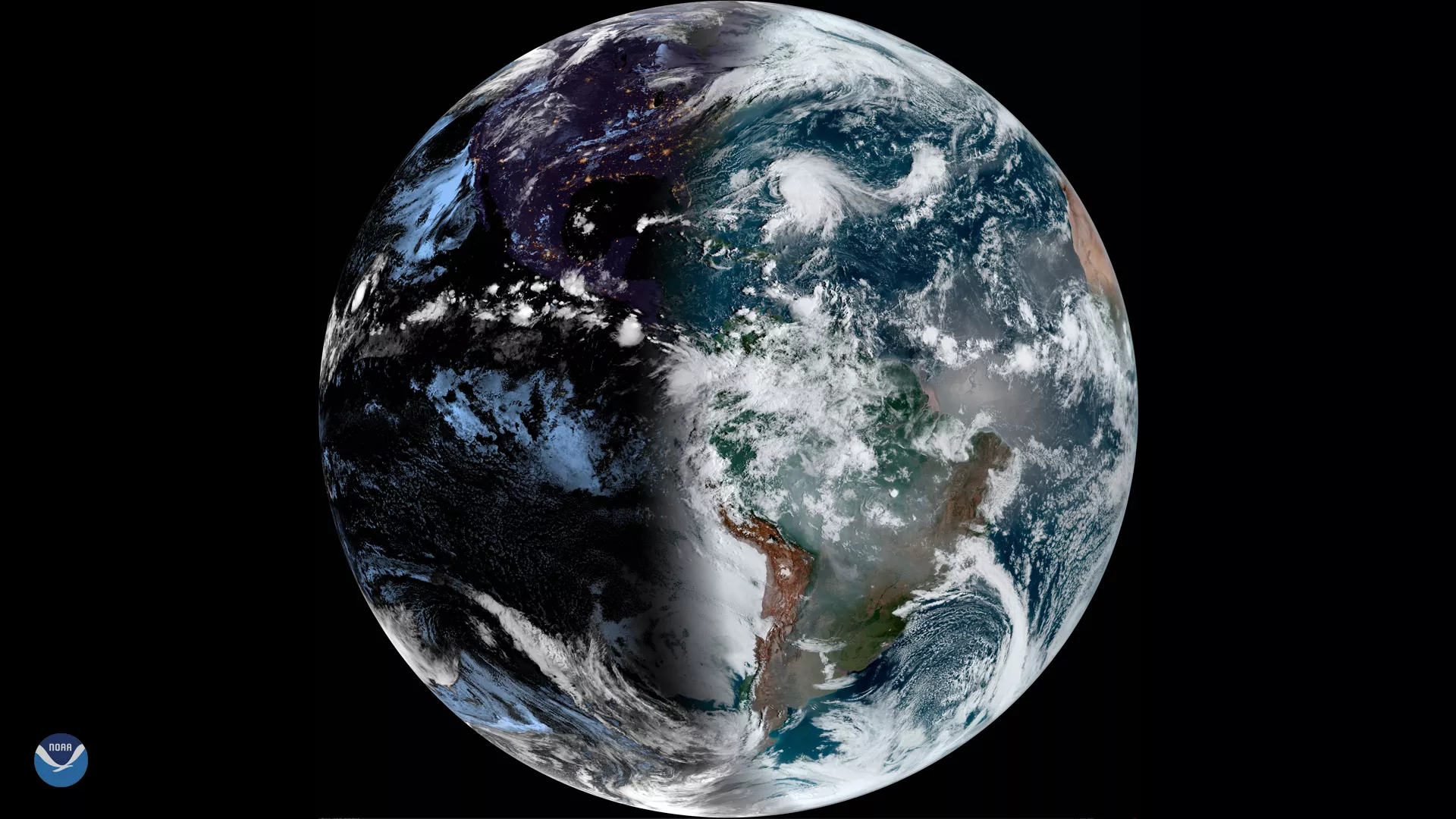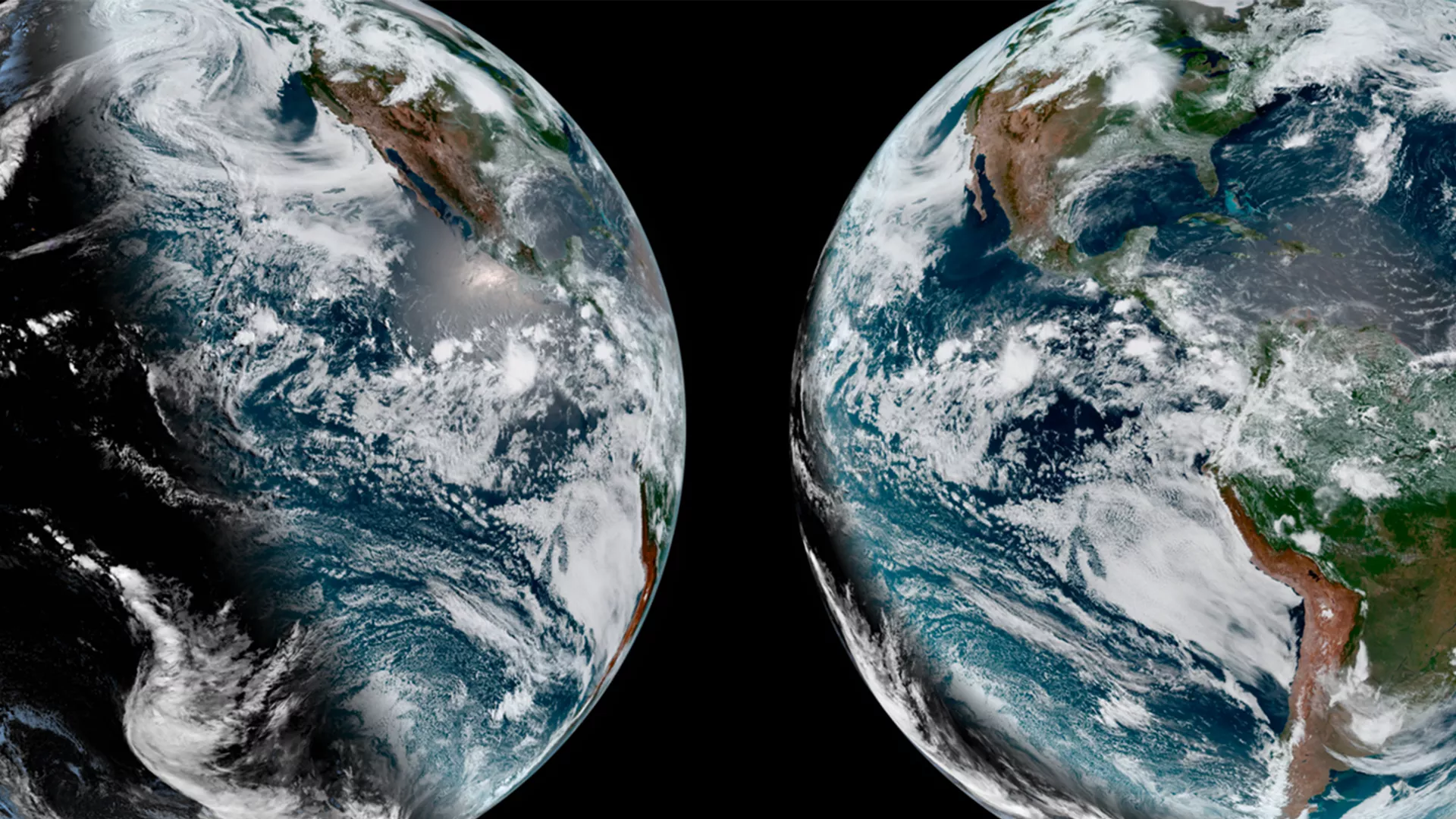Another solar phenomenon that we can watch over time via satellite imagery is the changing of the seasons.
This occurs because of the 23.5° tilt of the Earth, relative to its orbital plane. This means that throughout the year, different parts of the planet receive the Sun’s most direct rays when it is tilted closer. Thus, when the North Pole is tilted toward the Sun, it is summer in the Northern Hemisphere and winter in the Southern Hemisphere. When the South Pole is tilted toward the Sun, it’s summer in the Southern Hemisphere and winter in the Northern Hemisphere.
You may have heard about solstices and equinoxes, which signal the changing of the seasons, but what exactly are they?
The two solstices occur in June and December, and mark when the Sun's path in the sky is the farthest north or south from the Equator. A hemisphere's winter solstice is its shortest day of the year, and its summer solstice is its longest.
The equinoxes occur in March and September, and mark when the Sun is exactly above the Equator. This makes day and night equal length.


